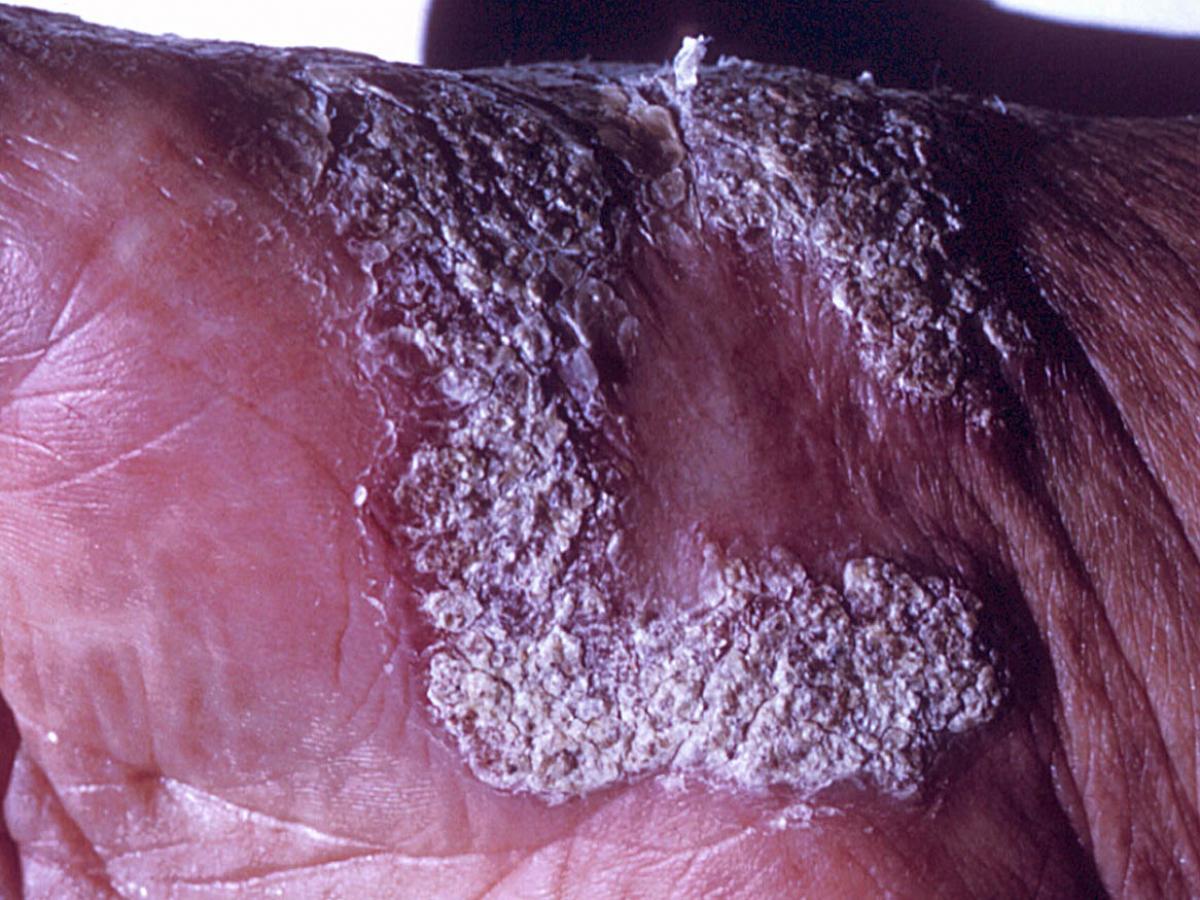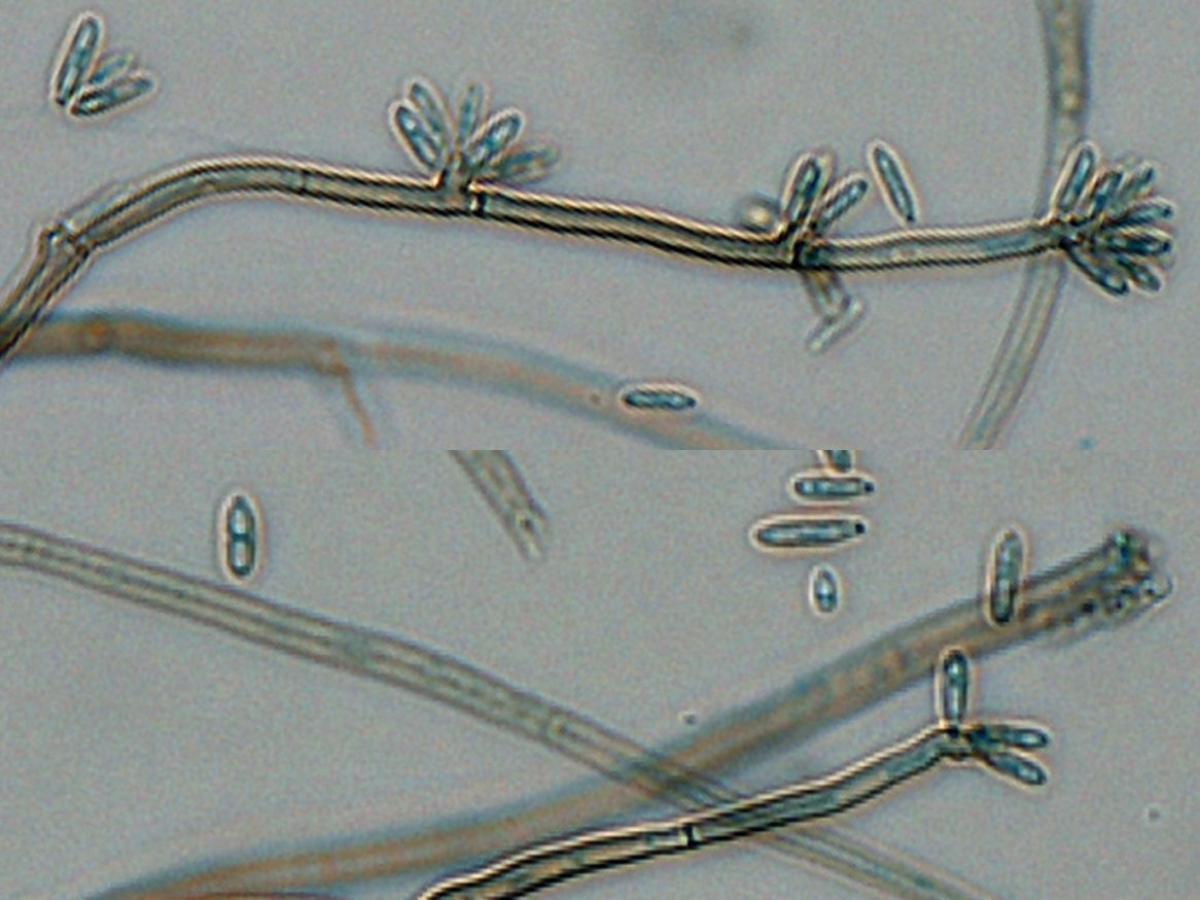Status message
Correct! Excellent, you have really done well. Please find additional information below.
Unknown 67 = Rhinocladiella atrovirens
Clinical presentation: Chronic verrucous chromoblastomycosis of the hand. Note tissue hyperplasia forming a white verrucoid cutaneous lesion. In Australia, chromoblastomycosis occurs mostly on the hands and arms of timber and cattle workers in humid tropical forests.

Culture: Cultures of Rhinocladiella atrovirens are restricted, velvety or lanose, olivaceous, often slightly mucoid at the centre; reverse dark olivaceous green to blackish.

Microscopy: Budding cells, if present, are hyaline, thin-walled, broadly ellipsoidal, 3.0-4.3 x 1.7-2.5 µm. Germinating cells are inflated, spherical to subspherical, 4.5-6.0 µm.

Conidiophores are short, brown, thick-walled. Conidiogenous cells are cylindrical, intercalary or free, 9-19 x 1.6-2.2 µm; denticulate rachis up to 15 µm long, with crowded, flat or butt-shaped, unpigmented conidial denticles. Conidia are hyaline, thin- and smooth-walled, short-cylindrical, with truncate basal scars, 3.7-5.5 x 1.2-1.8 µm. RG-1 organism.

Comment: Rhinocladiella contains 6-8 species, with five species of medical interest; notably R. atrovirens and R. aquaspersa.
About Rhinocladiella Back to virtual assessment




